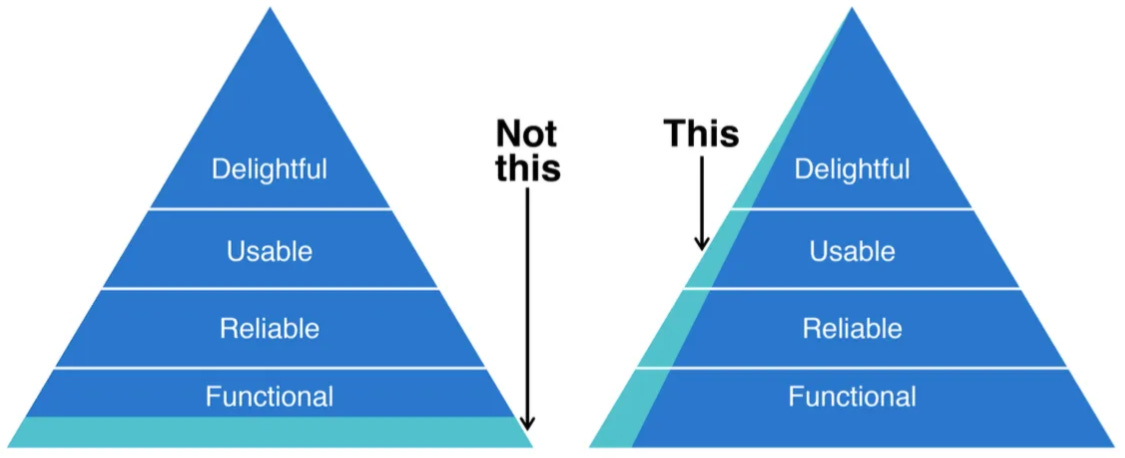How to Achieve Product-Market Fit? Part II: Product and Business Model
Updated: 5/1/2024
Hey, Paweł here. Welcome to the free archived edition of The Product Compass.
If you are not a paid subscriber, here’s what you might have recently missed:
Product Management vs. Product Marketing vs. Product Growth 101
Continuous Product Discovery Course + get certified
How to Achieve Product-Market Fit? Part II: Product
Last week in Part I, Market and Value Proposition, we discussed:
The key reason most new products fail
Step 1: How to come up with a good initial idea?
Step 2: How to analyze the market and the industry?
Step 3: How to analyze customers’ needs and segment the market?
Step 4: How to define value proposition?
Today we will focus on:
Step 5: How to define a product idea?
🔒 Step 6: How to validate a product idea?
🔒 Step 7: How to achieve product-market fit?
🔒 Practical insights and tips:
When and how to develop a vision?
When and how to develop a strategy?
When to ignite growth?
Before we go further, while I defined actions as sequential steps, any time you learn something new you might want to:
Persevere: continue while refining and improving your assumptions.
Pivot: change one or more of the key assumptions (market segment, value proposition, or a business model), go back, an start again.
Step 5: How to define a product idea?
In the previous part, we discussed performing market research and defining a value proposition.
If you haven’t thoroughly read The Lean Product Playbook by Dan Olsen, looking at this popular diagram, you might conclude that all that’s left is to define a Feature Set and UX:
But that’s not entirely accurate for two reasons:
Step 5.1: Define MVP feature set
At this point, you should understand customers, their needs, and those you might want to address. But it’s not feasible to test and develop the “whole product idea” all at once.
Therefore, we must select a subset of customer needs that we aim to solve in the first version of the product.
You can do it like this, where I added the last column:

And the corresponding Value Curve:

Interestingly, popular approaches to Initial Product Discovery (for a new product, as described in The Lean Product Playbook) and Continuous Product Discovery (as defined in Continuous Discovery Habits) vary significantly.
In the last 2 years, I’ve been working with 7 startups. We started combining what’s best in those two approaches. Here’s how you can do it:
💡 Structure opportunities and child opportunities similarly to what we do when using the Opportunity Solution Tree (the concept is also discussed as part of the Continuous Product Discovery Masterclass) and only then brainstorm and refine specific ideas.
💡 Roughly estimate every idea. You might want to tackle ideas for which Opportunity to add value / Estimated cost is higher first. Also, even if the Opportunity to add value is high, the cost of implementing an idea might not be viable for the business. In that case, you might choose another idea or review your Value Proposition.
💡 For every idea, identify hypotheses related to value, usability, feasibility, viability, and ethics. A great way to identify many of them is using User Story Map (the editable template). Shortly, we will discuss the possibility of testing the whole product idea with the help of an MVP prototype. At the same time, identifying hypotheses related to each feature creates transparency about which hypotheses were and were not tested by your MVP experiment.
💡 When analyzing features, consider adding a few “wow benefits” to delight users. Dan Olsen often visualizes it like below, referring to Designing for Emotion. Importantly, it’s not about which needs you want to address. It should be clear that your goal is to tackle needs that are important to the users. The key is to resolve those needs in a way that will delight the users - way better than they might expect.
Step 5.2: Define a Strategy and a Business Model
As we explored in Debunking 17 Common Misconceptions in Product Management, having product-market fit doesn't mean having a profitable business. There is a difference between creating value and capturing it.
Hence, while pursuing product-market fit, it's crucial to evaluate if you can build a successful business around it.
It’s worth realizing that popular approaches, Business Model Canvas and Lean Canvas, combine elements of strategy and business model. I suggested the recommended approach and the reasoning and shared an editable I use in my new: Startup Canvas: Product Strategy and a Business Model for a New Product.
Practical tips:
💡 Your canvas is a living document. It will evolve as you learn more, so don’t make it too detailed.
💡 Filling in the canvas will enable you to create testable assumptions that you can prove or disprove by experimenting before the implementation.
Step 6: How to validate a product idea?
Keep reading with a 7-day free trial
Subscribe to The Product Compass to keep reading this post and get 7 days of free access to the full post archives.





